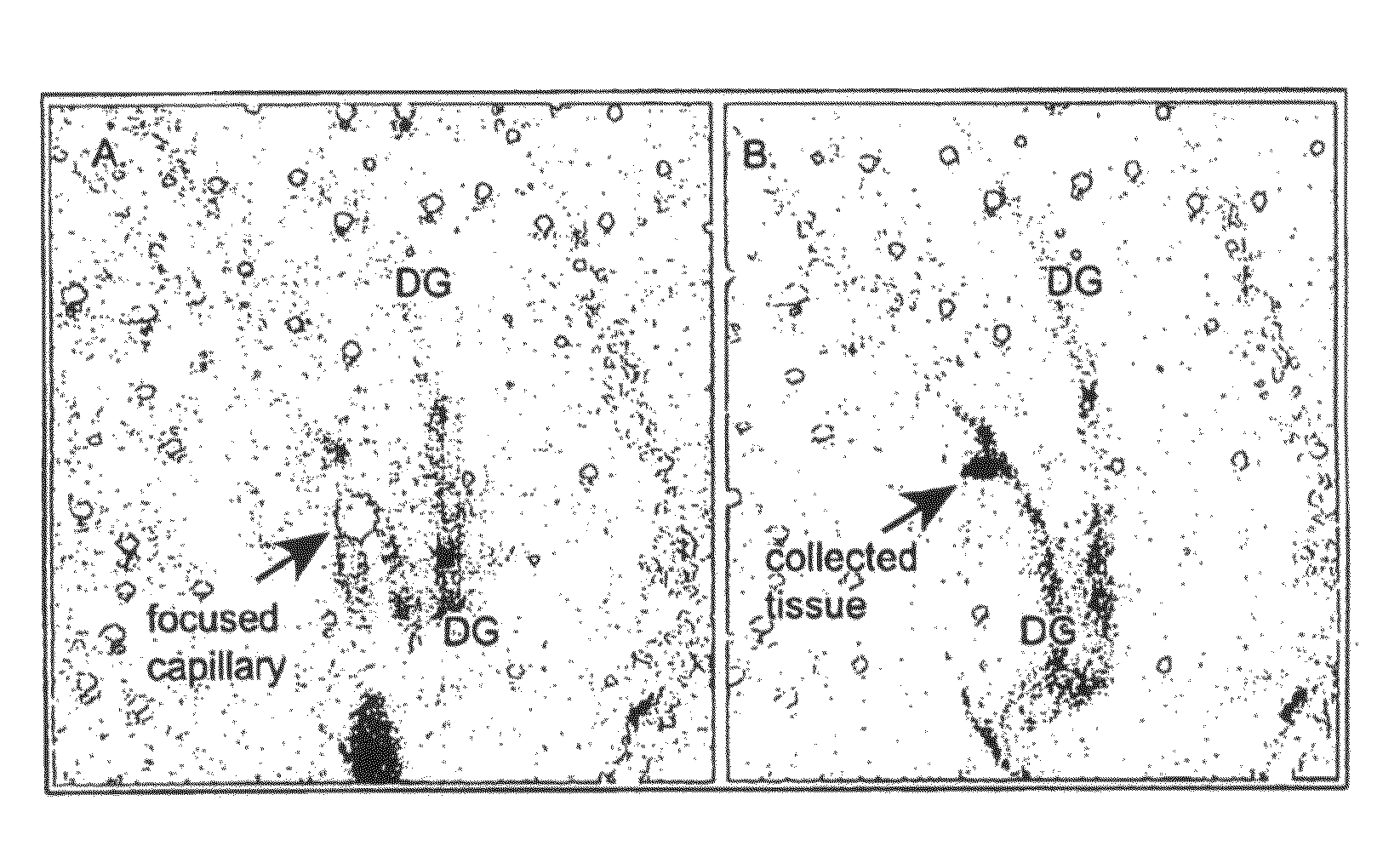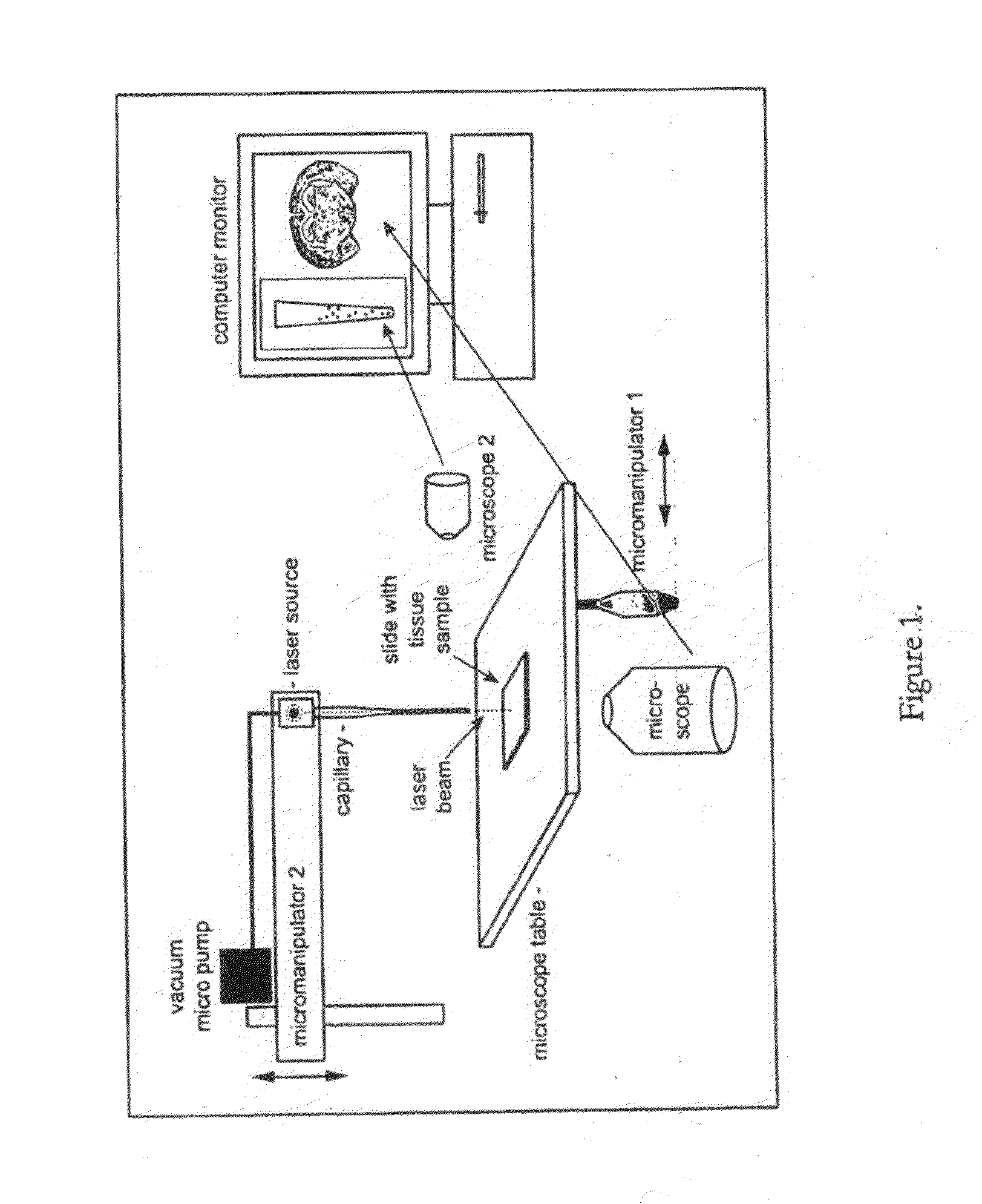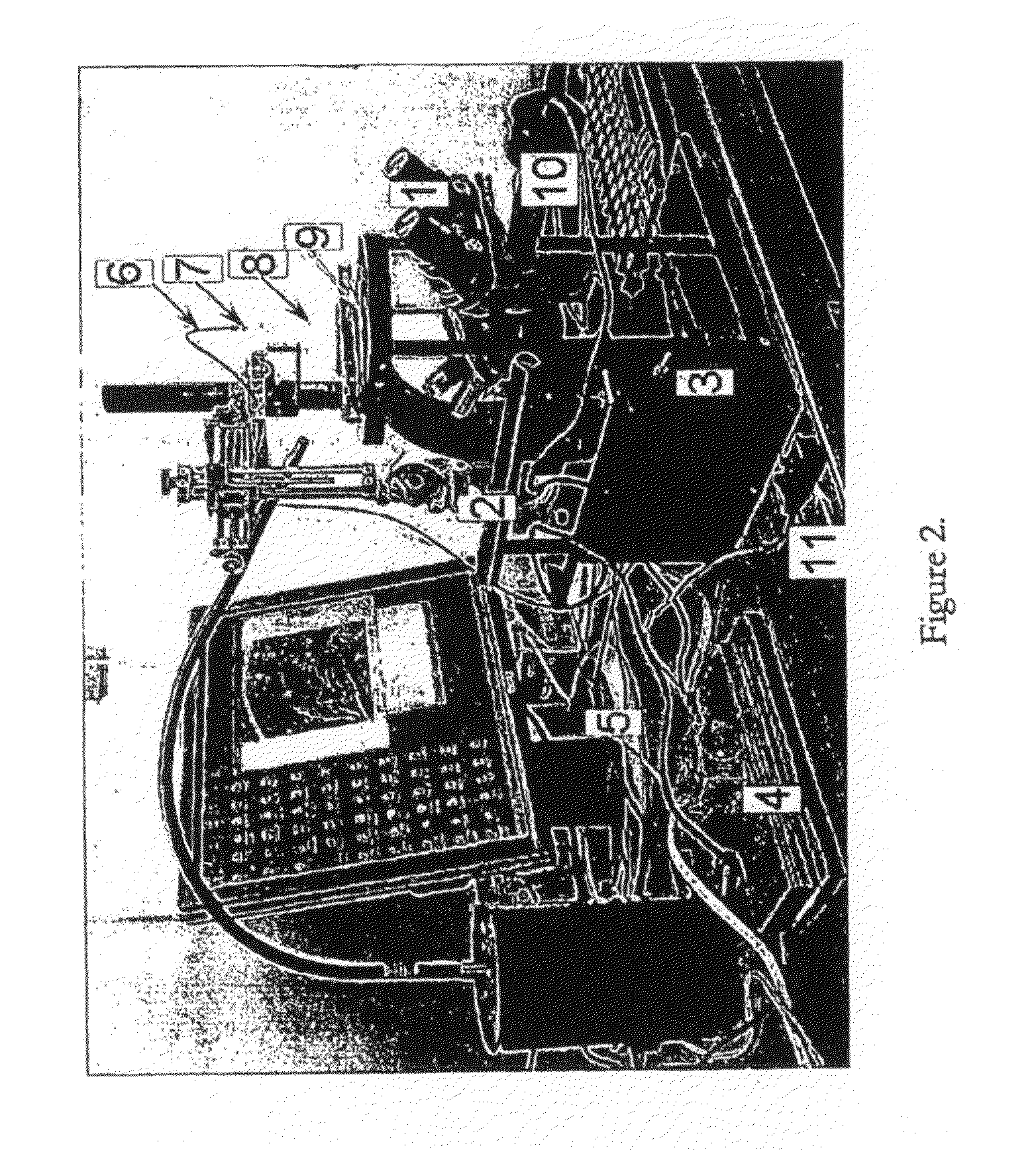Capillary-based cell and tissue acquisition system (CTAS)
a tissue acquisition and capillary technology, applied in the field of capillary-based cell and tissue acquisition system, can solve the problems of difficult to dissociate adult tissues without significant cell damage, high cost of these devices, and each of them has specific limitations, so as to reduce the amount of tissue sections used, reduce the number of experimental animals, and reduce the cost
- Summary
- Abstract
- Description
- Claims
- Application Information
AI Technical Summary
Benefits of technology
Problems solved by technology
Method used
Image
Examples
examples
[0040]Dentate gyrus can be collected from the rats with chronic seizures and normal control. The tissue can be used for RNA isolation, amplification and labeling. Labeled cRNA can be used in microarray experiments and identified genes can be overlaid with known set of seizure specific biomarkers to demonstrate specificity and relevance of findings.
[0041]Adult neural progenitors from ventricular zones and dentate gyrus can be collected and used in cell culture experiments. The results can be used to demonstrate that the stem cell cultures collected from the instant invention are more enriched for neural progenitors than if using standard dissection approach.
[0042]Motor neurons form spinal cords of mouse model of amyotrophic lateral sclerosis can be collected according to the methods of this invention and used in microarray experiments. These data can be compared to the results obtained from laser-captured cells.
[0043]Moreover, GFP labeled neurons from models of GFP transgenic animals...
PUM
| Property | Measurement | Unit |
|---|---|---|
| Thickness | aaaaa | aaaaa |
| Thickness | aaaaa | aaaaa |
| Cell growth | aaaaa | aaaaa |
Abstract
Description
Claims
Application Information
 Login to View More
Login to View More - R&D
- Intellectual Property
- Life Sciences
- Materials
- Tech Scout
- Unparalleled Data Quality
- Higher Quality Content
- 60% Fewer Hallucinations
Browse by: Latest US Patents, China's latest patents, Technical Efficacy Thesaurus, Application Domain, Technology Topic, Popular Technical Reports.
© 2025 PatSnap. All rights reserved.Legal|Privacy policy|Modern Slavery Act Transparency Statement|Sitemap|About US| Contact US: help@patsnap.com



